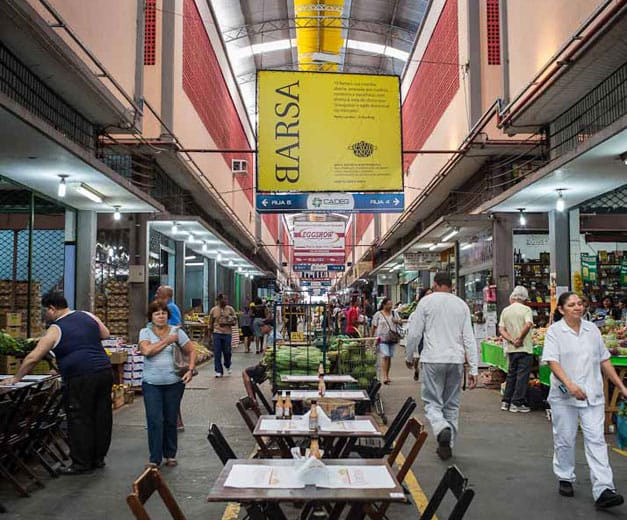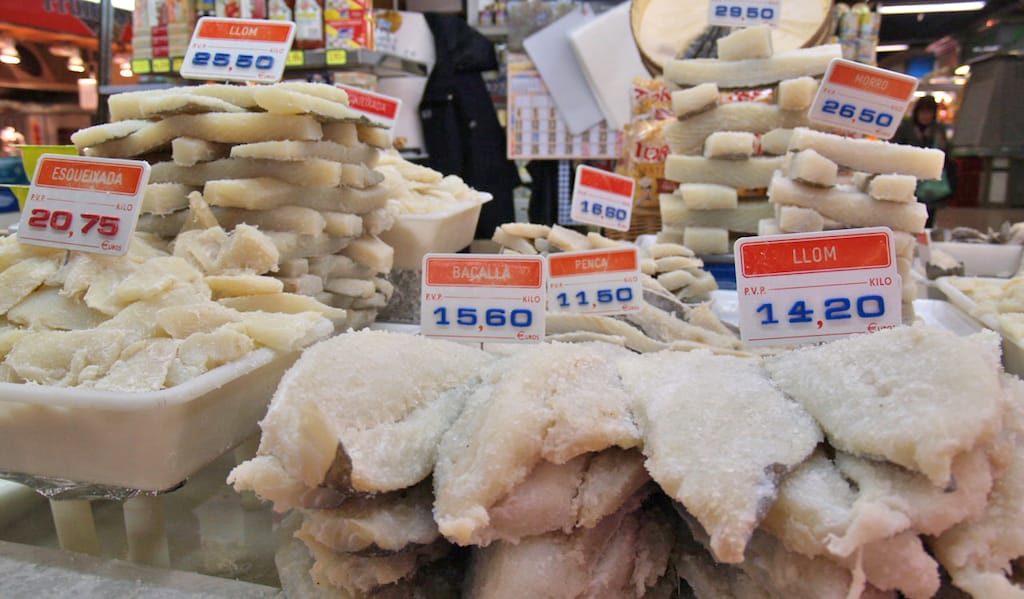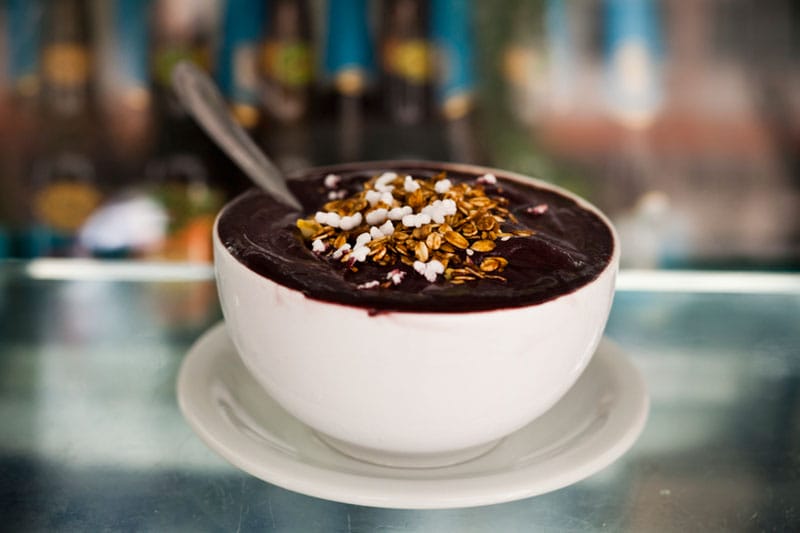Foreigners tend to see Rio as stretching from the Christ statue to the beachside neighborhoods, from Copacabana to São Conrado; the rest of the city just provides passage to the Atlantic. That’s a shame. Neighborhoods like Jacarepaguá, Madureira and Bangu have vibrant lives moving at a breathless pace and more intriguing locales than the typical postcard views of the city.
Even those of us who have made our homes here can miss these charms. For example, it was only after three and a half years living in Rio that we saw for the first time Madureira’s Baile Charme, a hip hop/electronic music dance party where extraordinarily fashionable attendees do choreographed line dances, and which takes place under a highway overpass about an hour away from the beaches.
A trip to the CADEG in Benfica offers some insight into how hard-working (as opposed to, say, tourist) Rio lives. A municipal market functioned downtown in Praça XV during the first half of the 20th century, until the construction of an elevated highway ran over the market and its strategic bayside location. In 1962, the market forces picked up the pieces and regrouped in the CADEG (Centro de Abastecimento do Estado de Guanabara, or the Supply Center of Guanabara State, as Rio de Janeiro used to be called). The new location was a bit farther north and west of Praça XV and less close to the bay.
“The logistics here are great and it was the only place with this access to the downtown,” says André Lobo, who between running a shoe store on the first floor is also responsible for promoting the market’s busy calendar of social events.
The 100,000-square-meter market is divided into three warehouse-style floors, with a pavilion just for flower sales at the rear of the second floor. (The building sits on an incline, so you can enter from the street either on the ground floor or from behind the second.)
As the city grew, another wholesale market buttressed CADEG’s operations – the CEASA (Centro de Abastecimento) in Irajá, north of Benfica and now the second-largest wholesale market in Latin America. CADEG, meanwhile, added a roof – to keep it from raining inside – and transformed many of its stalls in recent years into restaurants, bakeries and wine and beer shops. Waxing salons and hardware stores fit snugly within the gray walls next to emporiums of fine cheeses and churrascos where sausages and whole chickens threaded on skewers cook over coals from lunch to dinnertime.
The market is open 24 hours. Early mornings on Thursday and Saturday are the top time for flower shopping. Saturday afternoon is Cantinho das Consertinas’s Festa Portuguesa, with up to 1,000 attendees queuing for a host of salt cod dishes on the second floor. Even at 2 a.m. on a weekend, partygoers will stumble in for a nightcap of beef and fries. Expect some crowds; Lobo says CADEG averages 10,000 people a day.
Sorvete Brasil
Severino de Ramo Aragão has been making ice cream for 50 years. The 71-year-old works in the kitchens above this ice cream shop, using produce from CADEG to churn out flavors such as mango and 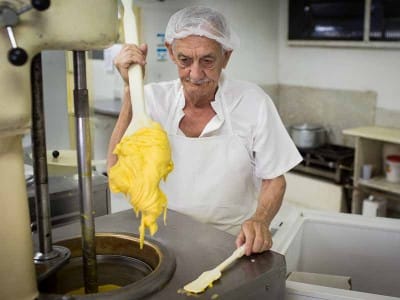 lemon, as well as the subtly sweet graviola, or soursop, and cupuacú, the tart Amazonian fruit. The milho verde (green corn) flavor tastes like lightly salted popcorn.
lemon, as well as the subtly sweet graviola, or soursop, and cupuacú, the tart Amazonian fruit. The milho verde (green corn) flavor tastes like lightly salted popcorn.
Ground floor
Hours: 11am-4pm; closed Sunday
Santo Gostinho
Walnice Martins Teixeira is well aware of the irony of a nutritionist-owned bakery specializing in breads and croissants. “Each time I was pregnant, I got more obsessed with bread,” explains Teixeira, who first baked from her home and sold to local hospitals. Now her bakery produces over a thousand breads and quiches a day. Besides such specialties as the australiano loaf, made of cocoa, rye and wheat and dusted with cornmeal, her café also sells sandwiches, such as turkey and Brie on ciabatta with cupuaçú jam.
Ground floor
Hours: Mon.-Fri. 7am-5:30pm; Sat. 7-11am; closed Sunday
Arte dos Vinhos
The purse-lipped staff in this dusty liquor store look like they could use a dose of their own product. Wines range from a $7 Chilean cabernet sauvignon to a $600 Super-Tuscan. Fine sipping cachaças
First floor
Hours: Mon.-Fri. 8am-5pm; Sat. 8am-3pm
Mundo das Cervejas
The name is no exaggeration: This treasure trove sells imported beers and Brazilian brands that are hard to find in typical Rio bars and restaurants. The Sputnik golden ale from Volta Redonda in Rio de Janeiro and the Maracujipa (yes, an IPA with passion fruit) from Ribeirão Preto in São Paulo make a strong case for Brazilian breweries.
Second floor
Hours: 8am-6pm; closed Sunday
Empório Quintana
This shop offers a wide selection of cheeses, cachaça tastings and thoughtfully crafted dishes that customers can eat while seated within. The risotto with queijo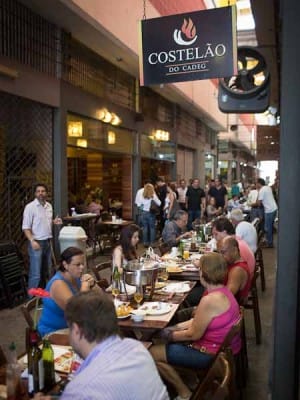 coalho (a salty cheese that doesn’t melt), abóbora (pumpkin), couve (collard greens) and azeite de dendê (red palm oil) is a tasty reinvention of ingredients considered ordinary by Brazilians.
coalho (a salty cheese that doesn’t melt), abóbora (pumpkin), couve (collard greens) and azeite de dendê (red palm oil) is a tasty reinvention of ingredients considered ordinary by Brazilians.
Second floor
Hours: Mon.-Sat. 8am-6pm, Sun. 10am-6pm
Corujão
CADEG abounds in grills serving up sizzling meats from open-faced pits. While Costelão draws the business-suit crowd, Corujão is the place to find hungry and cost-mindful carioca families. Heaping portions of rice and beans are always on the menu, while the daily specials cycle through beef ribs, oxtail, fish and feijoada, with freshly squeezed lemonade and orange juice to drink on checkered tablecloths. Families from the wealthy Zona Sul come for weekend abastecimento, says owner João Carlos Rodrigues Mendonça. “Here you can get an order of mixed grilled meats for three people, 50 reais. There it’s 60 per person.”
Second floor
Hours: 8am-5pm
(photos by Jimmy Chalk)
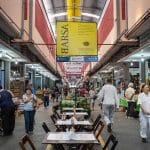 August 27, 2013 CADEG: 24-Hour Market People
August 27, 2013 CADEG: 24-Hour Market People
Foreigners tend to see Rio as stretching from the Christ statue to the beachside […] Posted in Rio March 12, 2020 In the House of Cod
March 12, 2020 In the House of Cod
In Spain, preserving the rituals of Lent – historically a period of 40 days of prayer, […] Posted in Barcelona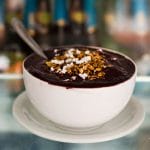 May 28, 2013 Tacacá do Norte
May 28, 2013 Tacacá do Norte
The eyes of Tacacá do Norte’s harried staff widen as yet another customer arrives during […] Posted in Rio
Published on September 03, 2015
Related stories
August 27, 2013
RioForeigners tend to see Rio as stretching from the Christ statue to the beachside neighborhoods, from Copacabana to São Conrado; the rest of the city just provides passage to the Atlantic. That’s a shame. Neighborhoods like Jacarepaguá, Madureira and Bangu have vibrant lives moving at a breathless pace and more intriguing locales than the typical…
March 12, 2020
BarcelonaIn Spain, preserving the rituals of Lent – historically a period of 40 days of prayer, penance and pious abstinence from eating meat that leads up to Easter – was up until the second half of the 20th century mostly the responsibility of priests. Nowadays, however, it is more often the country’s chefs who are…
May 28, 2013
RioThe eyes of Tacacá do Norte’s harried staff widen as yet another customer arrives during the lunchtime rush. The bedroom-sized snack bar can barely hold one line of chairs around its bar but they have somehow managed to squeeze in two. Impatient regulars shake hands and whistle “psst” to the sheepish young men staffing the…







































